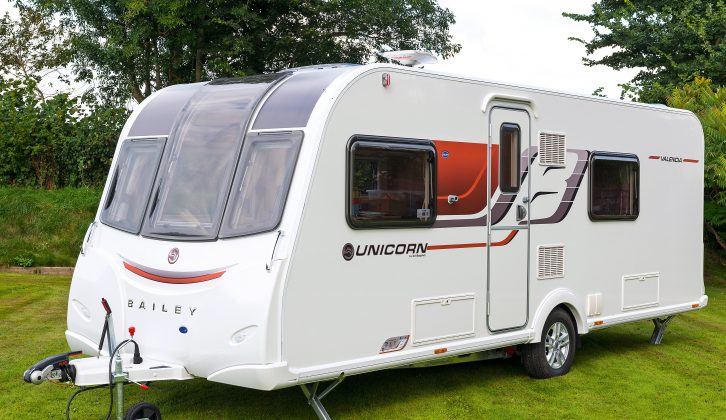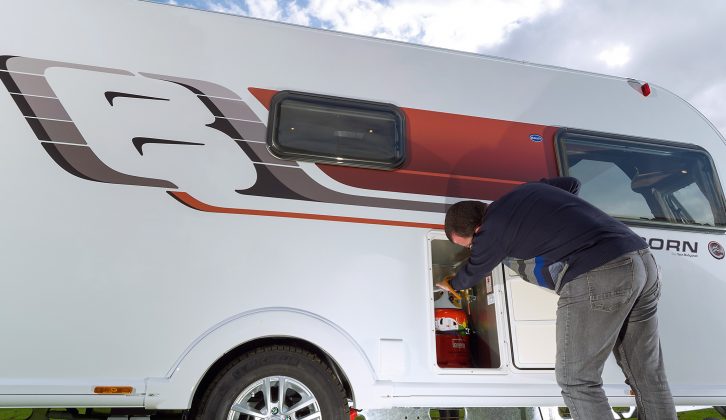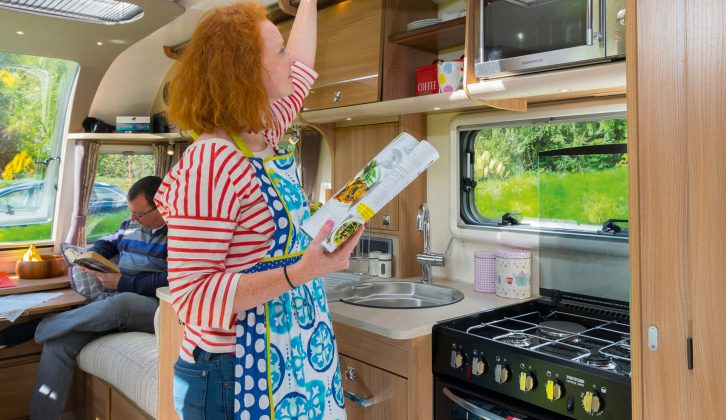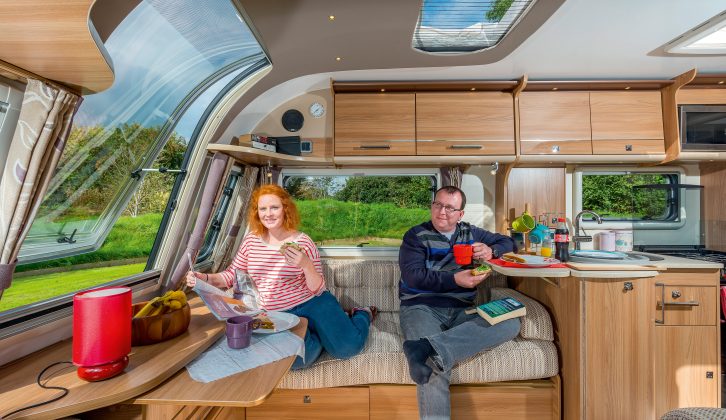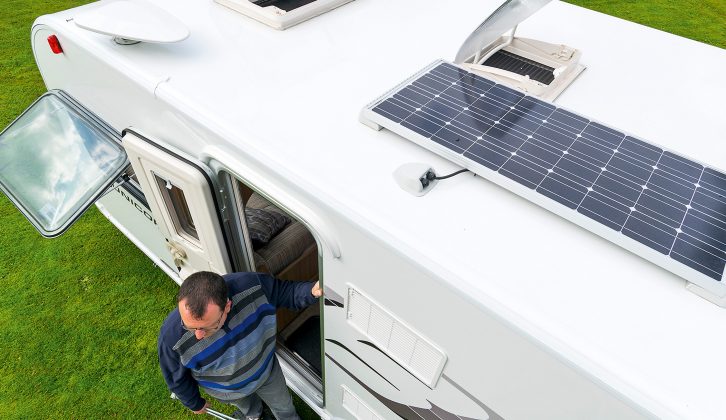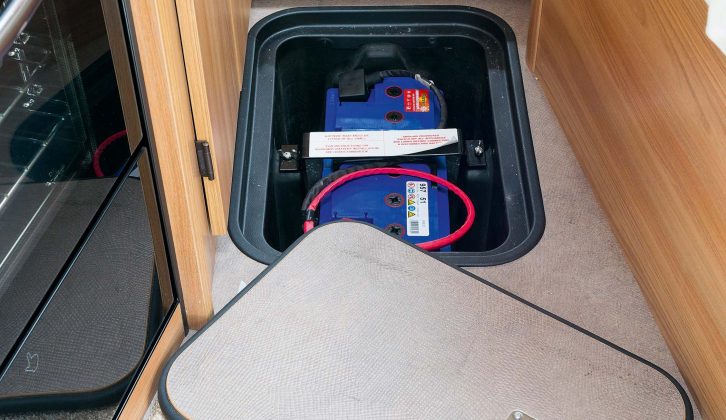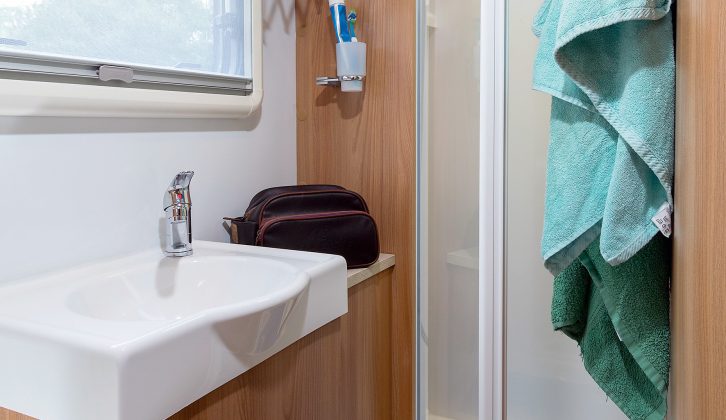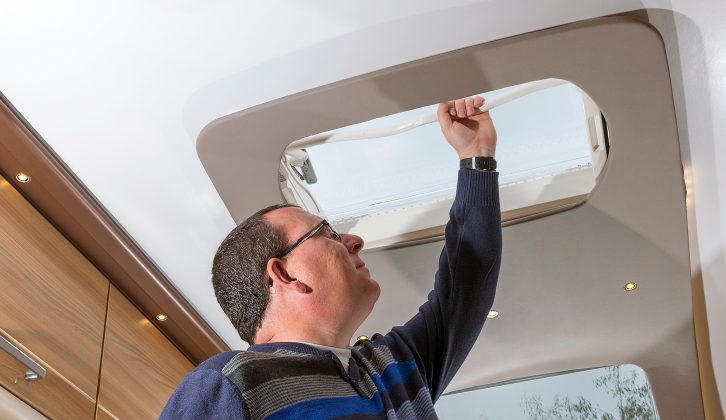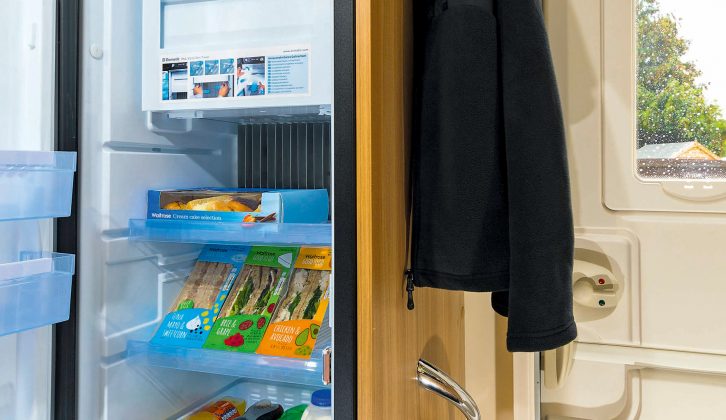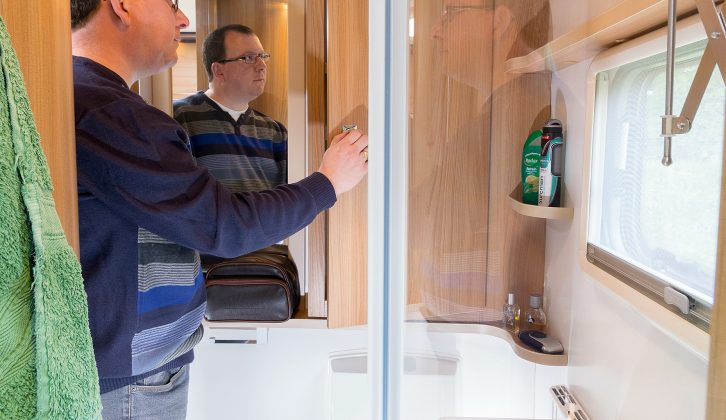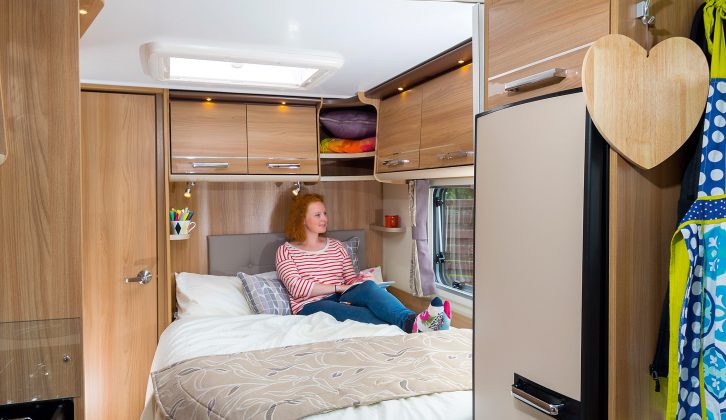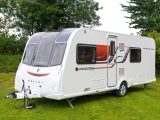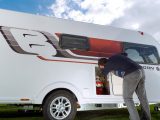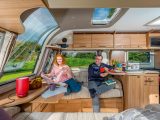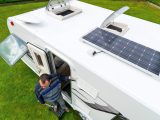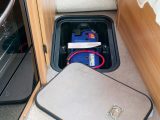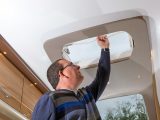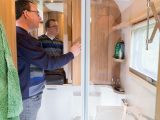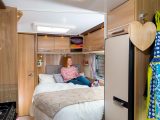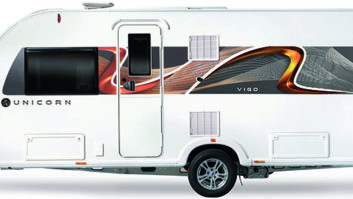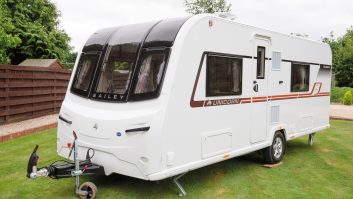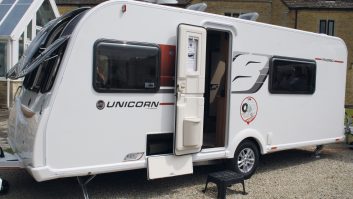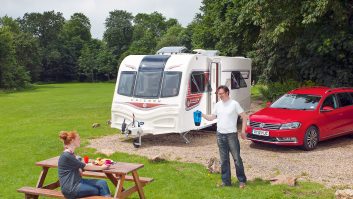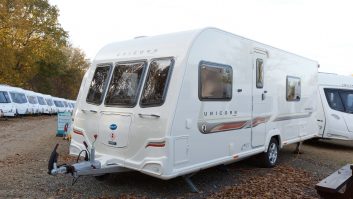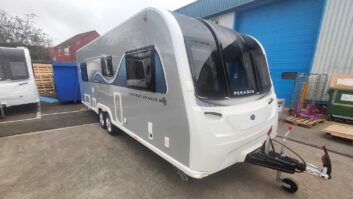Verdict
This model is the same size as the Unicorn Madrid, which has a less space-hungry side dinette instead of a fixed bed. However, recessed bulkheads and pale wood make the Valencia feel anything but compact.
As befits Bailey’s flagship range, the Valencia’s standard kit list is impressive, including a roof-mounted 100W Truma solar panel, a high level of security (an Al-Ko Secure wheel lock, Tracker system and a single key for all locks are standard) and 14in alloy wheels. Alde’s programmable space/water heating and a DAB digital stereo are also standard.
It’s the Valencia’s layout that really impresses, however. In an increasingly crowded premium-caravan market, it’s far from unique, but painstaking attention to detail suggests that it has been designed through extensive hands-on use, rather than by a committee.
Greater space and better heating in this latest model’s washroom, for instance, shows that customer feedback really can make a difference.
Has Unicorn righted the outgoing model’s wrongs? On this showing, we’d say ‘yes’.
Pros
The front window is enormous and lets plenty of light into the lounge
It’s more spacious than previous Valencia caravans
There’s a solar panel on the roof
It has a Tracker system and an Al-Ko Secure wheel lock
Alde heating
Cons
The roof lockers don’t have positive door catches
Bailey rarely follows the crowd when it comes to product development. While many of its rivals work constantly towards heavily revised, if not wholly refreshed, line-ups each and every year, Bailey makes changes only as and when it feels they’re absolutely necessary.
It’s telling, then, that the third-generation Unicorn range has appeared just two years after the second-generation line-up was launched. Unicorn II was no flop by any means – quite the opposite – but the new exterior divided opinion.
Buyers loved the way the double-height central front window flooded the lounge with light. They were less enamoured by the styling that resulted, however, especially when taking into account the tourers’ slightly dated, cream-coloured sidewalls and heavily moulded front and rear panels.
The Unicorn III, then, has quite a job on its hands: it must maintain the interior that appealed to previous buyers, while resolving the exterior design issues in order to attract as wide an audience as possible.
The question is: has the new range managed to pull it off? We took the latest Valencia away for a couple of days to find out.
First impressions are certainly encouraging. Most obviously, the cream body panels of old have finally been binned in favour of a new ‘Polar White’ scheme, which brings the looks bang up to date. The enormous, bold, stylised ‘B’ graphics writ large down the sidewalls are not for shrinking violets.
Bailey has addressed the previous model’s thorniest issue: the panoramic centre front window – with simple, yet clever use of bold roof graphics. These mirror the sweep of the middle window and cause it to blend in neatly. It’s far less intrusive, and the simpler front panel – which lacks a gas locker – rounds off a whole that’s neater, less fussy and much smarter than before.
Out back, the rear panel is smoother than previously and the straightforward sextet of lights are high-intensity LEDs. Classy chrome grabhandles, a revised Hartal habitation door and a new A-frame fairing that incorporates a pair of in-built steps (to help with cleaning) complete the exterior changes.
We towed the Valencia with our new, long-term Škoda Superb Estate on a variety of A-roads, and the combination of the Škoda’s considerable size and torque, allied to the Bailey’s Al-Ko ATC system, proved to be formidable.
The outfit felt rock-solid at speed, although the caravan was largely unladen, and coped admirably with a succession of steep hill starts and a single unscheduled three-point turn without grumbling. Given its 1493kg MTPLM, the Valencia requires a tow car weighing 1756kg in order to maintain a fully-laden 85% outfit match; it would be more than a 100% match with the Superb – strongly discouraged even for experienced tow car drivers .
Full-width end washrooms are in vogue with a vengeance
Pitching & Setting-up
Once on site and unhitched, you may need to manoeuvre the van on the pitch and, on reaching for a grabhandle, discover that it is vertical. Some people find these trickier to use than horizontal ones, especially when wet, but we had no problems.
Reaching the corner steadies is eased by guide-holes cut into the adjacent skirting. The toilet cassette hatch is on the offside but the mains inlet is on the nearside, so your hook-up lead will trail across the groundsheet.
Living
At 5ft 11in and 6ft long respectively, the Valencia’s near- and offside front bench seats offer ample lounging potential, and each can seat three adults comfortably.
The backrests are designed to tilt backwards slightly for additional comfort and the knee rolls, while prominent, are not so pronounced that they’ll lift anyone’s feet uncomfortably clear of the floor.
The light biscuit-coloured upholstery, ‘mink’ removable carpets and warm, mid-tone woodwork add to the general feeling of airiness.
By day, the enormous front window, allied to the good-sized adjacent rooflight, floods the lounge with light. It only opens
a couple of inches, but comes with its own integrated night blind and flyscreen.
By night, lighting is almost excessive. The usual four adjustable reading lights are aided and abetted by four LED fittings sunk into the header rail over the roof lockers, three downlighters over the central front window and additional ambient lighting behind the rooflight surround. Rarely would you need everything switched on simultaneously.
For light meals and snacks, extend the tabletop from between the centre chest of drawers and the shelf above it. A folding table is provided for full meals, but access to its dedicated stowage area is tight.
The shelf that tops the chest reaches right to the front and is big enough for a hand of cards or a round of drinks. Two drawers beneath offer good storage, together with a footlocker further down.
The JVC DAB/FM radio and CD player is standard fitment and compatible with most MP3 players via a built-in USB port and aux-in socket. The sound quality is excellent, although anyone hoping to be lulled to sleep with a spot of mellow jazz in the bedroom will be disappointed to find that the only speakers are in the lounge.
Kitchen
The offside kitchen looks a little compact at first glance, but the lift-out drainer and fold-up flap adjacent to the lounge combine to create a considerable amount of work surface. The stainless-steel sink is deep enough to swallow a banquet’s worth of dishes, while the sturdy, high-set mixer tap makes filling a kettle a breeze.
The new kindergarten-simple Alde Hydronic heating/boiler control panel is here, too, alongside two power sockets. The separate oven and grill are topped by a hob comprising three gas burners and an electric hotplate. The standard-fit 800W microwave above is on permanent standby for evenings when you don’t prepare a full-blown gourmet dinner.
Only twin-axle Unicorns warrant the 190-litre fridge/freezer, but the 133-litre three-way Dometic ‘Slim Tower’ fitted in single-axle models is more than enough for most. It offers four adjustable shelves, four on the door, a salad crisper box and a freezer compartment.
Washroom
Full-width end washrooms are in vogue with a vengeance, and the Valencia’s is hard to fault. The swivel toilet is in the offside corner, the washbasin is centred along the rear wall and a fully-lined shower cubicle is in the nearside corner.
The large shower has a pair of dedicated downlighters, an oversize showerhead and a large shelf with V-slots that allow water to drain – all evidence of Bailey’s thoughtful design. Modest caravanners, however, may not appreciate the full-height clear-panel door!
The lack of lockers above the washbasin is surprising, but a full-width shelf has ample room for cosmetics and toiletries. A domestic-standard, scissor-hinged shaving mirror has regular and magnified glass, and clips sturdily to the adjacent wall for travel. We’re pleased that Bailey’s now-standard laundry bag has survived the transition into this latest iteration.
Many customers complained that the Unicorn II’s heated towel rail was inadequate to warm the washroom, so it was replaced by a proper radiator.
A shallow storage cupboard shares wall space with a deep vanity mirror, which has its own downlighter, and a second shelf below. There’s ample room to dress and plenty of space around the toilet, while there’s more floor space in the shower than in the previous model.
Beds
The Valencia has four berths, but we suspect it will mostly be bought by couples who don’t want to make up a double bed every night. The fixed double will enjoy the most regular occupancy and, at 6ft 2in x 4ft 5in, it’s very accommodating.
The fixed bed proved supremely comfortable, too, while his ’n’ hers knick-knack shelves, adjustable reading lights, a padded headboard and other little practicalities make this a perfect nook for afternoon naps and Sunday lie-ins alike.
Visitors can choose from the 6ft 6in x 5ft 11in front double, or one of the singles – the 6ft-long offside settee or its 5ft 11in nearside counterpart. The backrests slot easily into place to form the double mattress, but you’ll have to squeeze them under the fixed bed when they’re made up as singles. Lighting for night-owl bookworms is actually more generous here.
Storage
There’s space aplenty for belongings throughout the Valencia, from the twin drawers and footlocker in the lounge’s central chest, to the shelves and cupboards in the washroom.
Roof lockers predominate throughout and, while the oversize central window precludes the inclusion of additional locker space over the front windows, space in both seat boxes partly compensates. A flap at the front of the offside seat bench provides easy access, but much of the nearside box is taken up by a wet locker designed to hold water containers, hook-up leads and the steady winder. This reduces the space for bedding, while the only indoor access to it is via a small hatch at the end of the box, near the entrance door.
Each roof locker is a good size, however, and the lack of positive door catches is offset by the strong soft-close mechanisms. The void beneath the fixed bed is huge, but we’d caution against overloading it, because it is aft of the axle.
The offside gas locker reduces the space in the impressive-looking rounded kitchen cupboard, but the generously proportioned cutlery drawer, low cupboard and twin roof lockers more than make up for this. There’s a large locker above the fridge, too, while the bedroom warrants four more overhead lockers and a huge two-level open corner shelf.
The wardrobe is necessarily non-uniform in size and shape to allow passage through to the washroom beyond, but offers adequate space to neatly hang clothes for two people.
Technical Specifications
| Berth | 4 |
| MiRO | 1339 kg |
| Payload | 154 kg |
| MTPLM | 1493 kg |
| Shipping Length | 7.37 m |
| Width | 2.28 m |
